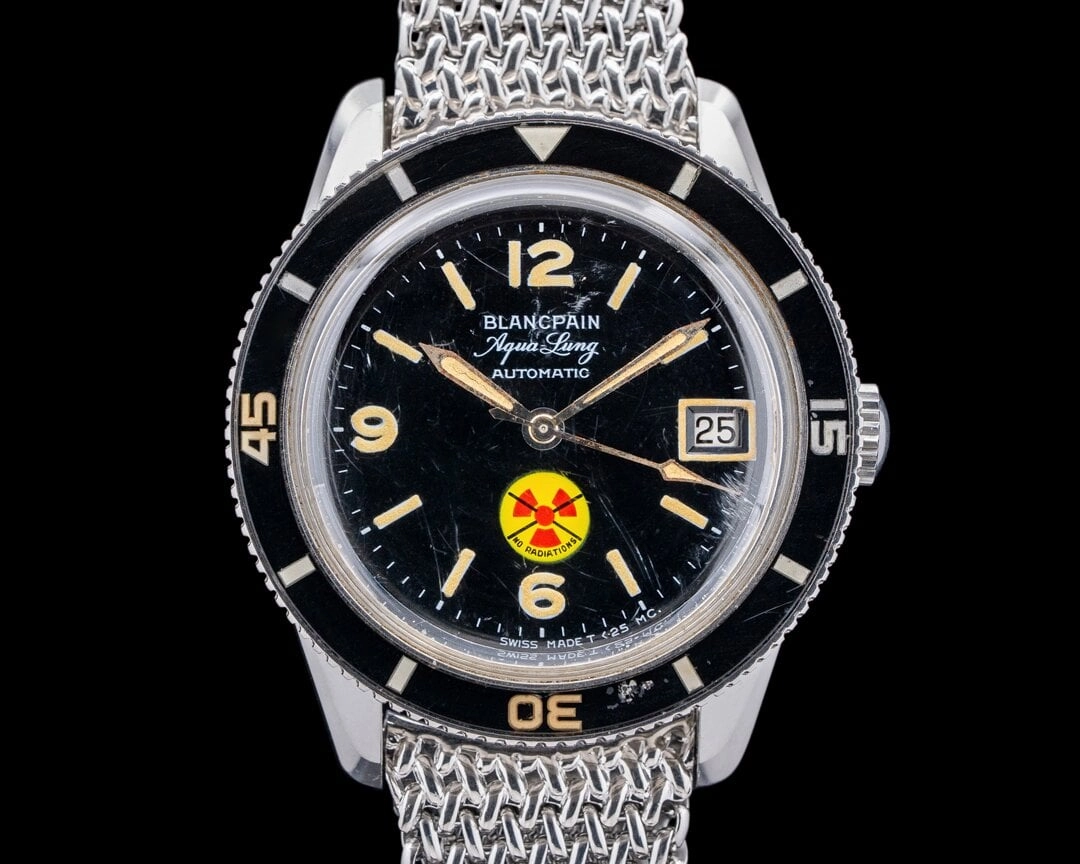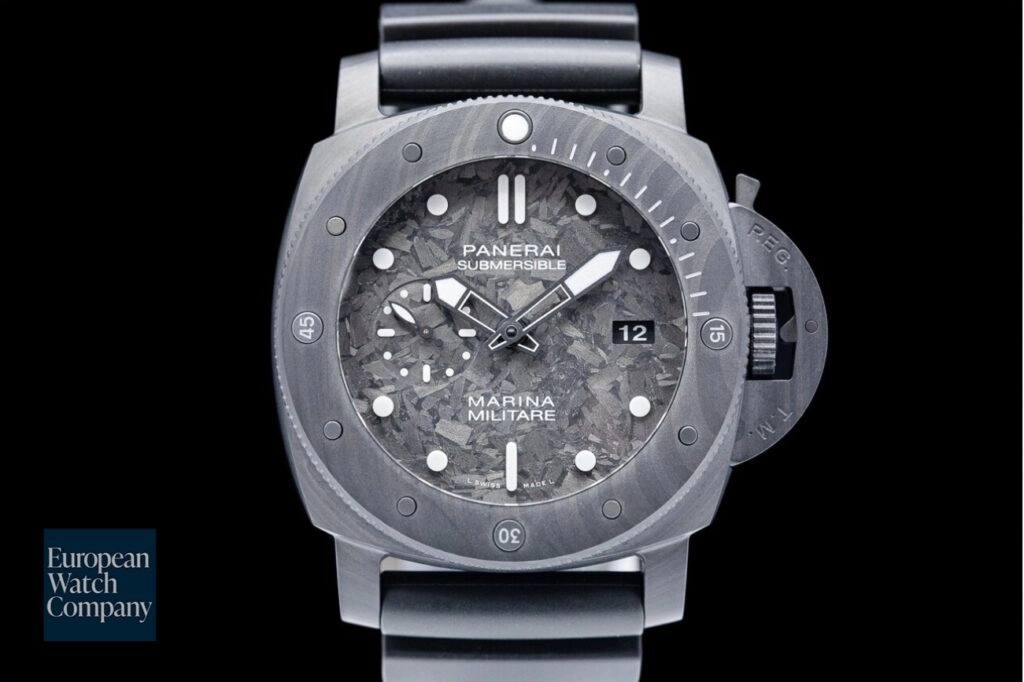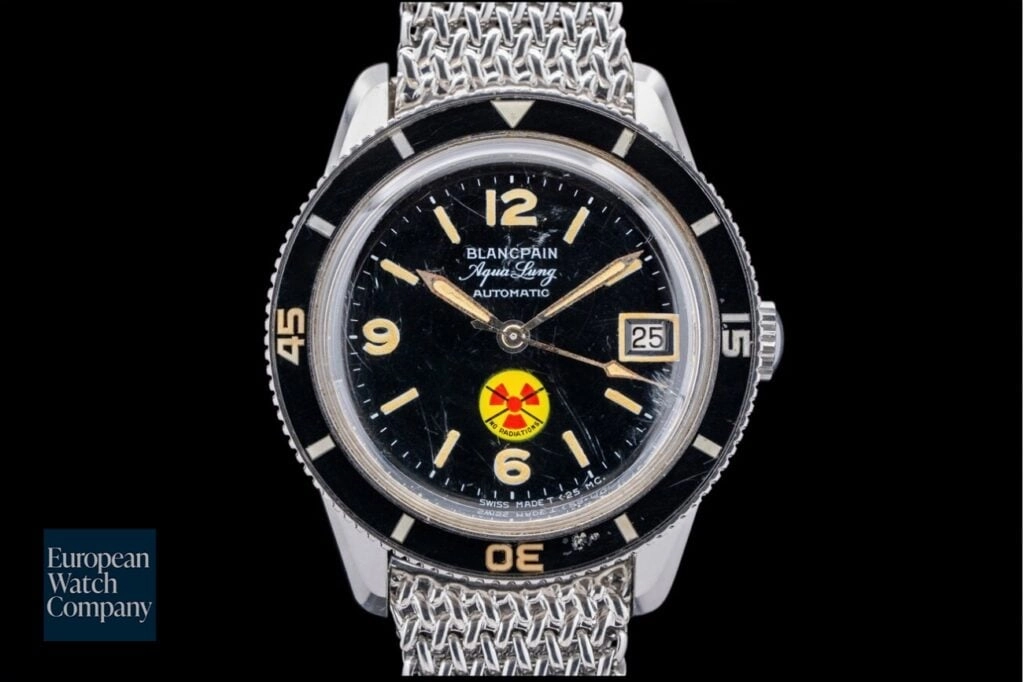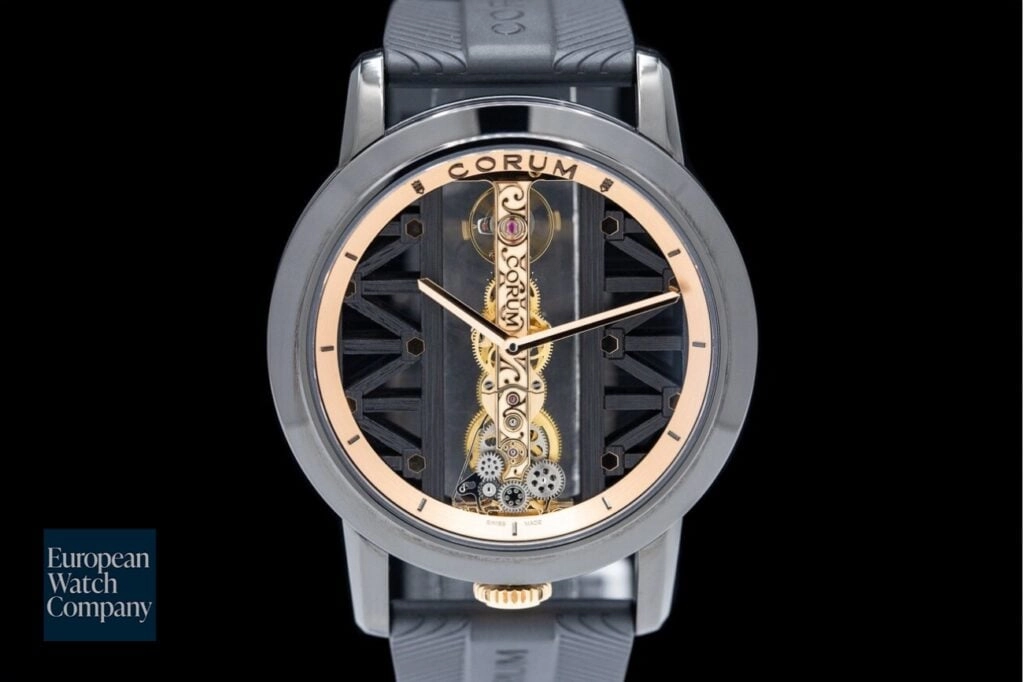Overlooked: Face Value - Watches with Dials Worth a Second Look
Overlooked

Overlooked is your weekly horological treasure hunt — where we dig through the vaults of European Watch Company to spotlight a few quietly brilliant pieces hiding in plain sight. It’s the sleeper hit, the underdog, the “wait, how is this still available?” watch you didn’t know you needed… until now.

Panerai's history is deeply tied to the Italian Navy, also known as the Marina Militare. Indeed, the brand developed the first Radiomir prototype for the Royal Navy back in 1935. So it makes sense that they would continue to develop military-grade tool watches to this day. But the Submersible Marina Militare Carbotech PAM02979 takes it to another level. The forged carbon "Carbotech" case is impressive on its own: lightweight, ultra-durable, and patterned uniquely for each watch. But it’s the dial that makes this piece unique. Crafted from the same Carbotech material, the surface carries a subtle marbled texture, making sure that each watch is different. And this design doesn't sacrifice legibility. Large luminous markers and bold hands make it easy to read. And the unidirectional bezel and 300-meter water resistance keep it every bit the professional dive watch. If you're looking for that iconic Panerai look with a twist, this just might be the watch.

But while the Panerai’s military roots run deep, the Blancpain Vintage Fifty Fathoms Aqualung “No Radiations” has actual history baked into its very dial. Back in the 1950s and early ’60s, some dive watches, including earlier Fifty Fathoms models, used radium-based lume that emitted harmful levels of radiation. It wasn’t uncommon for curious owners (and military technicians) to wave a Geiger counter over their watches and watch the needle jump, something that, to this day, still happens if you test one of those original “radiation” dials. By the mid-’60s, Blancpain introduced the “No Radiation” dial as a clear assurance that the luminous material was safe. This 36mm reference 5981-1 wears that badge proudly at 6 o’clock, surrounded by a matte black dial, creamy patina, and minimal text. It’s the kind of authenticity only a true vintage tool watch can offer. And while the radium-based models are cool, we'd take the "No Rad' version as our daily wear.

And we end with something on the complete other end of the horological spectrum. Corum may be under appreciated in today’s collector conversation, but the Golden Bridge remains the brand’s undeniable icon. First introduced in 1980, it flipped traditional watch architecture on its head, showcasing its movement as the star. This 2024 titanium skeleton limited edition continues that tradition with a skeletonized “dial” that’s really a showcase for the in-line baguette movement suspended from end to end. Every wheel, bridge, and gear is visible, turning the act of telling time into something a little more exciting. What makes this edition stand out even further is the architectural framework flanking the movement on both sides, an area that, in most Golden Bridge models, is left as empty space. The titanium case keeps it light and modern, while the absence of a conventional dial makes it feel almost sculptural.
From the Panerai’s modern military twist to the Blancpain’s vintage authenticity and the Corum’s architectural transparency, each watch proves that a dial can be far more than a backdrop. Whether textured, marked by history, or completely open, the right dial turns timekeeping into art.